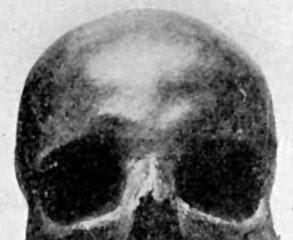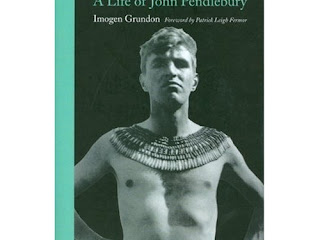Architectural students form a significant group at the BSA. This is a preliminary list.
The first arrangements for an architect to be admitted the BSA were made in November 1887. This was the result of an initiative from the Royal Institute of British Architects (RIBA) ‘to assist upon architectural work in excavations’.
The first architectural student was Ravenscroft Elsey Smith (1859-1930), son of
Thomas Roger Smith (1830-1903), an architect and professor of architecture at University College London (UCL) from 1880. Smith had studied at the Slade School, UCL (1877-78). In Greece he was attached to the work of the Cyprus Exploration Fund (CEF) assisting with the work at Paphos (1887/88). Smith subsequently went into partnership with his father, before holding the chairs of architecture at King's College, London (1900-13) and UCL (1913-20).
Smith overlapped with two architects working on Byzantine monuments: Robert Weir Schultz (Schultz Weir) (1860-1951) and
Sidney Howard Barnsley (1865-1926). Schultz was a gold medallist and travelling student of the Royal Academy of Arts. Barnsley was a student of the Royal Academy. They started their association in the London office of Richard Norman Shaw. Apart from working on the architecture of the Erechtheion, they made a major study of Ayios Loukas in Phocis. They were engaged to work on Byzantine architecture in Salonica and at Mount Athos under the patronage of
Dr Edwin Freshfield. Schultz later assisted with the work at Megalopolis.
The BSA recognised the importance of the contributions made by architects and created an architectural studentship. The first holder was Charles Richmond Rowland Clark (b. 1869) (an 'architectural artist') in 1896/97, though he had been in a Greece the preceding year on a studentship from Royal Academy.
Pieter Rodeck (b. 1875) was admitted as a gold medallist and travelling student of the Royal Academy (1896/97). He assisted with the work at the gymnasium at Kynosarges.
Edward Barclay Hoare (1872-1943), the son of Robert Gurney Hoare, a banker, studied at Magdalen College, Oxford (1890-94) and was an architectural student (1897-98). (His brother
Charles was a stockbroker.) His architectural work included
ecclesiastical projects.
Arthur Edward Henderson (1870-1956) was Owen Jones student of the Royal Institute of British Architects (1897/98) and was admitted to the BSA in 1897/98. He was re-admitted in 1898/99, 1901/02, and 1902/03. He lived in Constantinople until 1904. He assisted Bosanquet with the project at Kyzikos, and Hogarth with his excavations at Ephesus.
Thomas Dinham Atkinson (1864-1948) studied at University College London and had been articled to the architect
Sir Arthur Blomfield. After working as an architect in Cambridge, Atkinson was admitted as an architectural student (1898/99). During the year he assisted with the excavations at Phylakopi on Melos. He was later surveyor to the Dean and Chapter of Winchester Cathedral (from 1918) and to the Warden and Fellows of Winchester College (1919-46).
David Theodore Fyfe (1875-1945) trained at the Glasgow School of Art (1885-87, 1890-97). He was admitted as the architectural student at the BSA (1899/1900). He then served as architect to the Cretan Exploration Fund until c. 1905. He returned to work in London, and was then director of the School of Architecture at Cambridge University.
Robert Douglas Wells (1875-1963) studied at Trinity College, Cambridge (1893-96) and was admitted to the BSA on an architectural studentship (1900/01). He worked with Bosanquet at Praesos in eastern Crete (1901).
Charles Heaton Fitzwilliam Comyn (1877-1933) was admitted to the architectural studentship in 1901/02 (and re-admitted 1903/04). As well as working on studies of Byzantine architecture, he excavated in eastern Crete with John H. Marshall (his contemporary at Dulwich College), and with Bosanquet at Palaikastro. He was re-admitted in the spring of 1904 to work on the new Penrose Library and the extension to the hostel.
Edwin Francis Reynolds (1875-1949) was admitted to the BSA in 1902/03 after serving as an architect's assistant in London. He prepared a series of architectural drawings in Greece, Constantinople and Bursa.
James Black Fulton (1876-1922) held a Royal Academy Prize (1899) and was admitted as a Soane Student to the BSA (1902/03) as part of a study tour of Germany, Italy, Greece, Turkey, Palestine and Egypt.
Christian Charles Tyler Doll (b. 1880) was the son of Charles Fitzroy Doll, a London architect. After studies at Trinity College, Cambridge, he took a diploma in architecture at UCL (1903). He was admitted to the BSA 1904/5 and served as architect at Knossos.
Ramsay Traquair (1874-1952), son of Ramsay H. Traquair, keeper of the Natural History collections in Edinburgh, was admitted as an architectural student to the BSA in 1905/06. He was also a student of the Byzantine Fund. He worked on the survey of Laconia and on the architectural project in Constantinople. He was subsequently professor of architecture at McGill University, Montreal.
Frank George Orr (b. 1881) trained at the Glasgow School of Art (1898-1901, 1902-03), and was admitted to the British School at Rome (1904) and the BSA (1905/06).
Walter Sykes George (1881-1962) was a travelling student in architecture from the Royal College of Art, and a Soane Medallist of the Royal Institute of British Architects. He was admitted to the BSA in 1906/07, and then in 1908/09, 1909/10 (as a student of the Byzantine Research Fund), and 1912/13. He worked on architectural projects in Constantinople, and assisted with the excavations at Meroe in the Sudan.
W. Harvey was a gold medallist and travelling student of the Royal Academy and was admitted to the British School at Rome and the BSA in 1907/08.
Lionel Bailey Budden (1887-1956) trained at the Liverpool School of Architecture (1905-09), and was admitted to the British School at Rome and the BSA in 1909/10. He returned to Liverpool as associate professor (1910-33) and then Roscoe Professor of Architecture (1933-52).
Harry Herbert Jewell (1882-1974) was admitted to the British School at Rome and the BSA in 1909/10. He worked with F.W. Hasluck on Paros.
George Esslemont Gordon Leith (1886-1965) had worked in South Africa as an architect with
Sir Herbert Baker on the Union Buildings before being admitted as the first Herbert Baker Student at the British School at Rome (1911). He subsequently was admitted to the BSA (1912/13).






